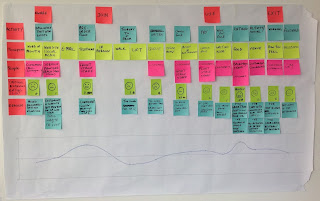I think work community campuses, such as the Skypark in Glasgow, would be the ideal place for introducing a new co-created service. They currently provide a host of services for resident employees including massage days, beauty days, site social evenings, car valet service and prescriptions deliveries to name a few.
Skypark does seem to be missing one service though; a healthy, sustainable and convenient food service. And I also think that there is scope for additional entertainment services.
I invited Skypark residents to complete a questionnaire to get an idea of what people currently do for lunch, gauge interest in a new healthy food service and to ask for their ideas on any new services that they would like to see in the future.
A sample of the online questionnaire
I asked Skypark residents:
What they currently do for lunch
Are they satisfied with available food service options
Would they use a healthy, sustainable and convenient food service
Are there any services that they would like to see at the Skypark
Analysis of Results
What they currently do for lunch
- Over 60% of people who completed the questionnaire either take packed lunch or heat food in their company kitchenette
- 20% use the Glasgow School of Arts temporary restaurant 'Where The Monkey Sleeps' which will be moving from the Skypark at the end of 2013
Are they satisfied with available food service options
- Two thirds of participants are satisfied with current food service options
- Unless bringing in healthy packed lunch, most other options are not healthy
Would they use a healthy, sustainable and convenient food service
- Almost 80% of participants would use a healthy food service at least once or twice a week
- 42% would use the service most days
Are there any services that they would like to see at the Skypark
- Food trucks like in the US and London
- Wrap bar/station with salads and fillings
- Sofas to relax on at lunch time and more activities, "an excuse to leave my desk"
- A vending machine
Overall a good response to creating a new healthy food service for Skypark residents. I like the idea of giving people the opportunity to leave the desk - and office - during their lunch break. Getting away from the computer for 30 minutes and having a break from thinking about work must be a good thing!





